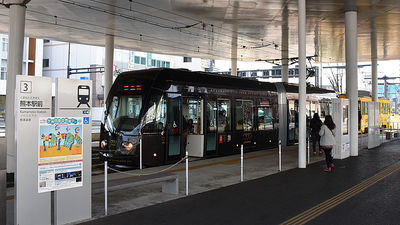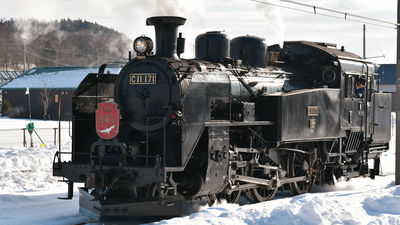I have seen what is happening on the JR Meisho Line, which has been out of service for nearly five years due to typhoon damage.

The JR Meisho Line, which connects Matsusaka Station and Ise-Okitsu Station, was severely damaged by Typhoon No. 18 in October 2009. Initially, all lines were suspended and the bus was operated on behalf of the bus, but one week later, the service resumed from Matsusaka to Iejo on the way. However, until now, the service has been suspended from Ieki to Ise-Okitsu.
Initially, JR Tokai intended to switch to a bus because the suspended section may be affected by natural disasters in the future, but in response to strong requests from local governments and residents along the railway lines, it was decided to carry out mountain and hydraulic control and its maintenance in Tsu City, Mie Prefecture. We have started the restoration work from May 30, 2013, as we will restore the railway by doing so.
Now that more than a year has passed since the restoration work started, I decided to actually run and check what is happening along the Meisho Line.
(PDF file)
This time, I decided to go to Ise-Okitsu first and then go down to Ieki and Matsusaka. There is no art on the same round-trip route, so take National Routes 166 and 368 to Okitsu. It is a route that goes around the south side by embedding the following Google map.
This route will be along the Ise Honkaido when you enter Route 368. It took about an hour to guide the car navigation system, so I thought it would be an easy way to go, but there was a sign saying that the road was narrow, saying, 'I can't pass more than 8m on the Nikaki Pass.'
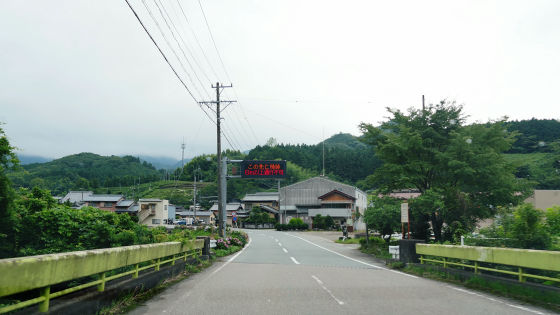
Information on the closure of large vehicles by the Matsusaka Civil Engineering Office in Mie Prefecture. Crossing the Nikaki Pass is a road known as a rough road, and although there is no guardrail on the valley side, the road width is as wide as one vehicle, so it was a relief that there were few oncoming vehicles, but it is easy to choose. I realized that it wasn't the route.
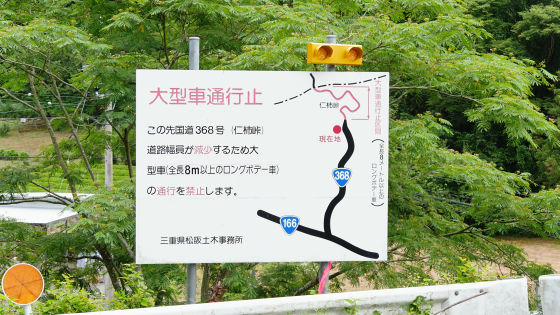
When you pass through the pass and enter Tsu City from Matsusaka City, you will see a sign like 'Welcome to Kamikimura'. This is a model of the stage, 'God Samra' novels town's Shiwon Miura of Tsushi Misugi 'God removed by complicit everyday', 'in May 2014

The weather was barely cloudy and it wasn't raining. I would be at a loss if it was raining.
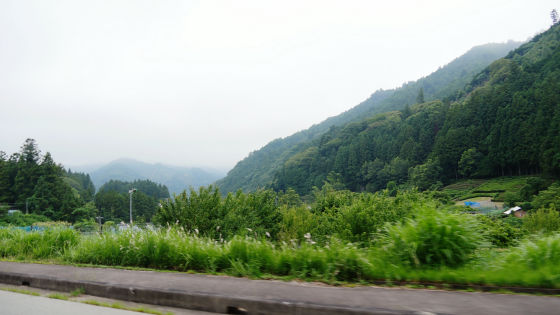
However, the road gets much better once you cross the pass.
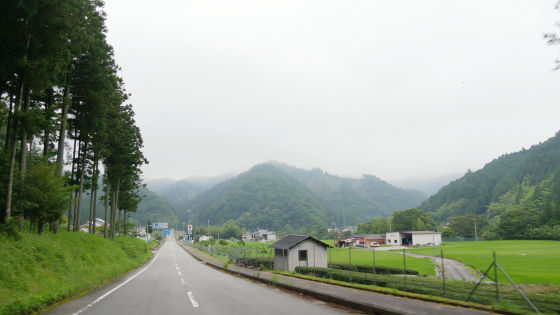
On the way to Okutsu, I encountered
Encounter a natural monument antelope on the Ise Honkaido-YouTube
As you go further, you will see the railroad tracks running from the right. This is the Meisho Line.
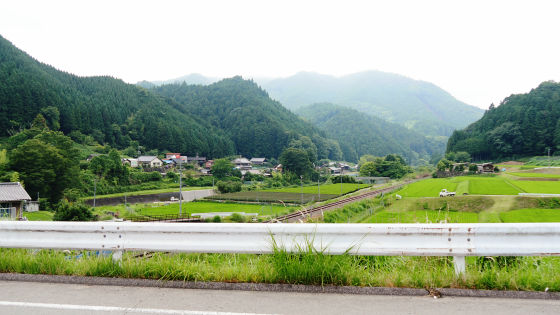
So, I arrived in front of the station in Ise-Okitsu.
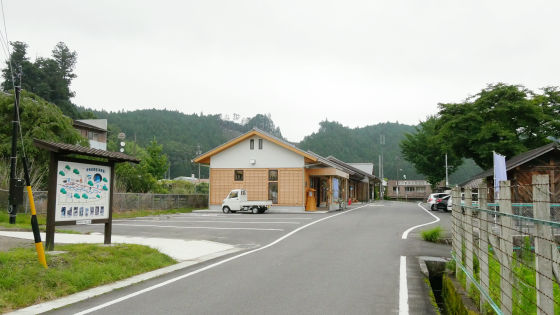
This new building is 'Tourist Information Exchange Facility in front of Ise-Okitsu Station in Tsu City'.
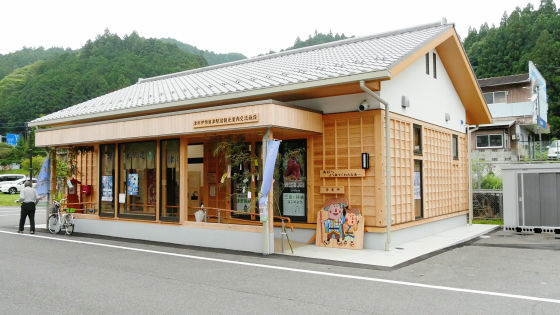
The building next to it is Ise-Okitsu Station. The slogan is 'Let's protect the Meisho Line together'.
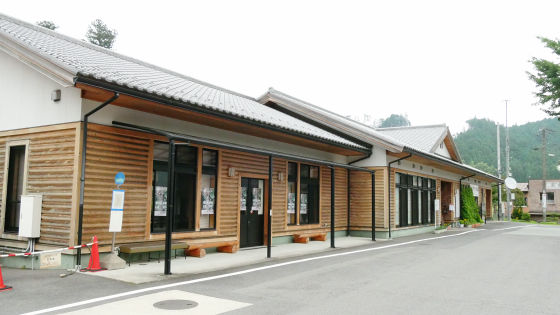
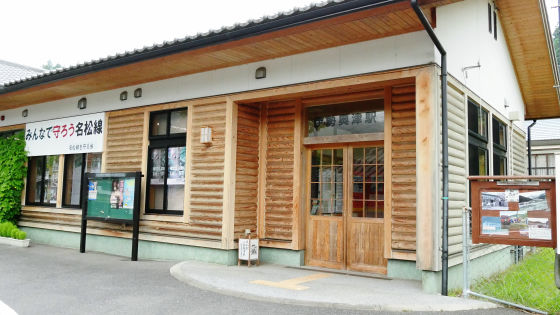
The station building is integrated with the Tsu City Yawata Claim Office and the Yawata Community Center.
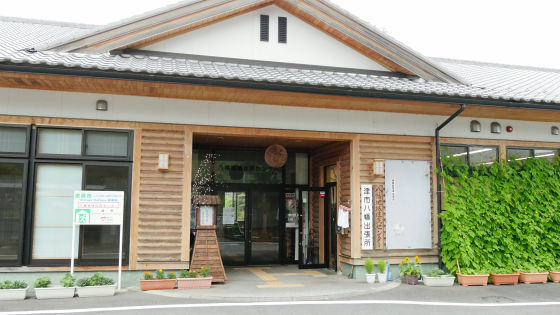
The old photos are on display at the station ...
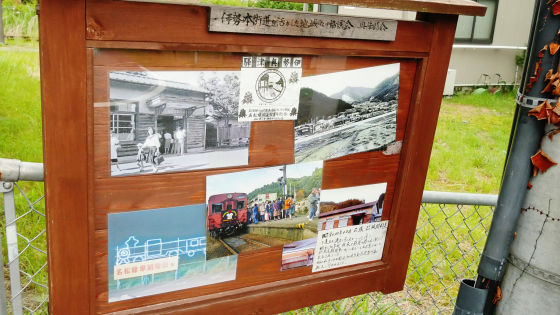
I have a notebook ...

There is a familiar stamp.
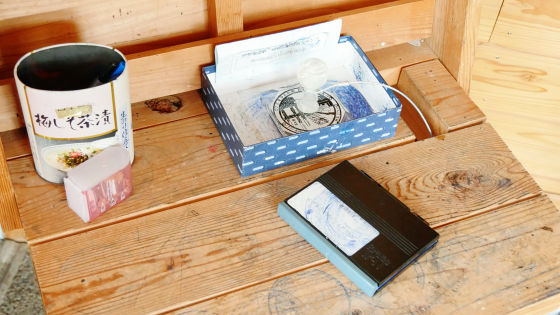
In front of the station building is the Ise-Okitsu bus stop for the JR substitute bus, and the JR substitute bus that connects Ieki and Ise-Okitsu, which is currently out of service, departs and arrives.
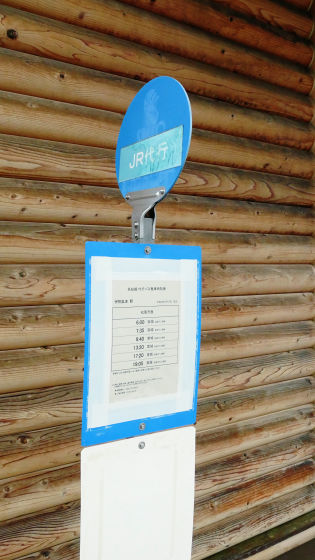
There are 6 buses departing from Ise-Okitsu at 6:00, 7:35, 9:40, 13:20, 17:20 and 19:05.
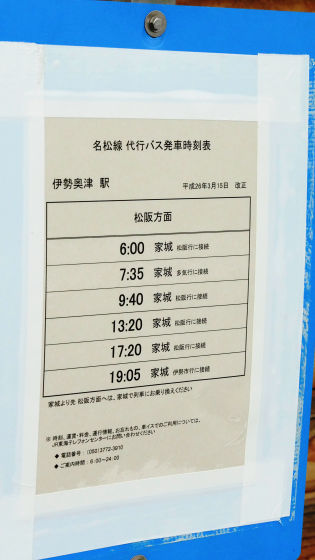
The timetable inside the station has also been changed to that of a substitute bus. The fare is 320 yen to Iejo and 840 yen to Matsusaka.
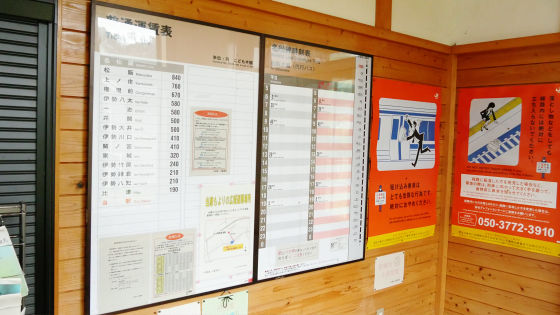
You can also go to the home side, but the home itself is off limits.
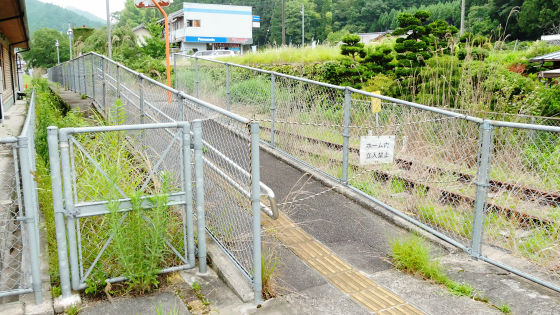
It's been a few years since it wasn't used anymore, so it doesn't seem to take much care to resume using it.
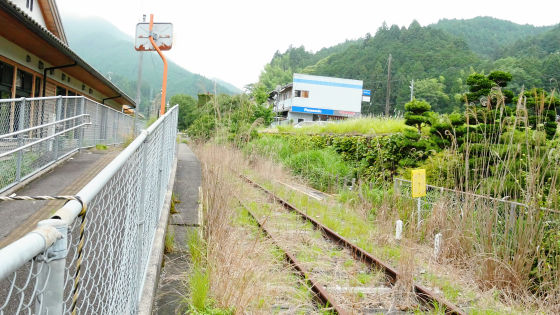
The other side of the home looks like this.
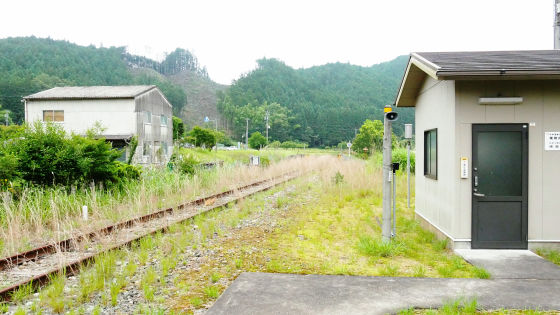
When you leave the station building in the form of 'getting off the station' again, you can see this kind of sight.

Around the station, there are tourist attractions such as Mitake Sakura, Kawakamisan Wakamiya Hachiman Shrine, and Kitabatake Shrine.
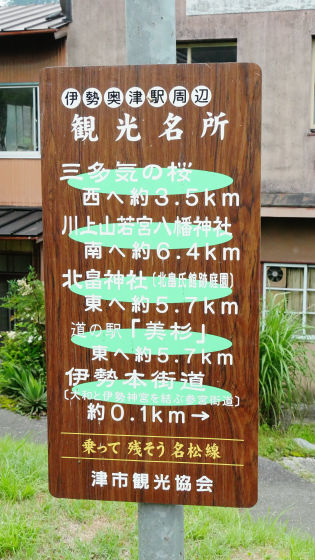
In front of the station is the 'Yawata branch office' stop of the Tsu city community bus. If you go to Nyunomata by this bus, you can see the shooting place of Naoki's house played by Masami Nagasawa in the movie 'WOOD JOB!' And the shooting place of Yoki's house where the main character, courage lived. However, the service to Nyunomata is only available from Monday to Friday.
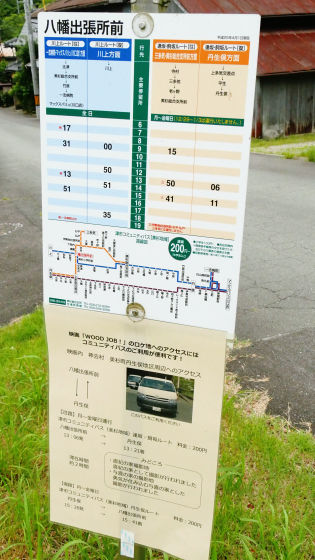
There is also a Mie Kotsu bus stop, but ...
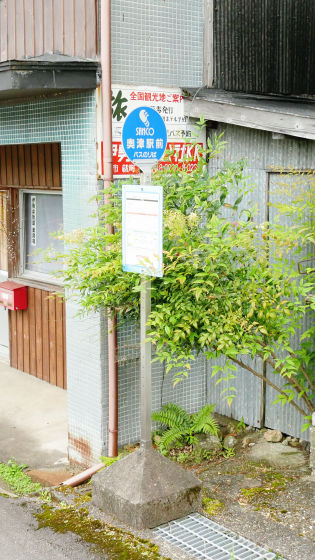
This is only for Nabari station square at 7:11 and for Iigakiuchi at 18:40. Probably the main thing is going to school.
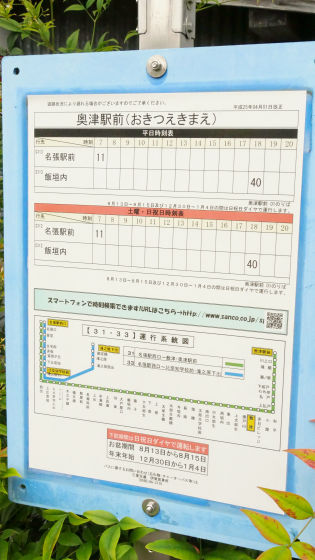
After looking in front of the station, I decided to go around Ise-Okitsu station. This is a railroad crossing in front of Ise-Okitsu.
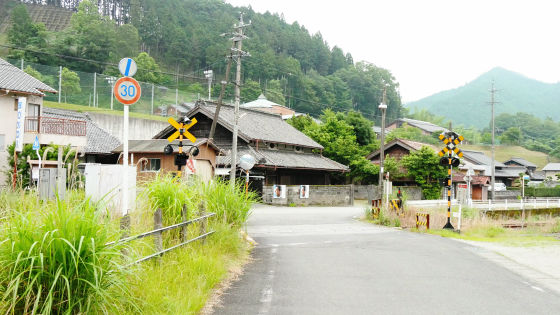
From here, take a gentle left curve to Ise-Okitsu.
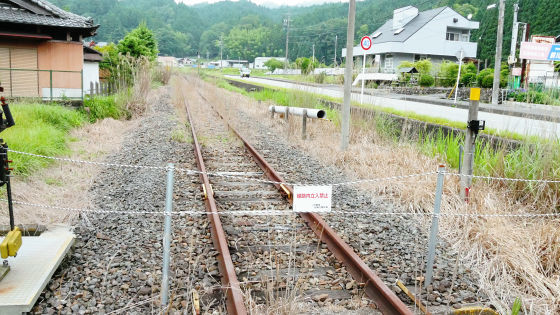
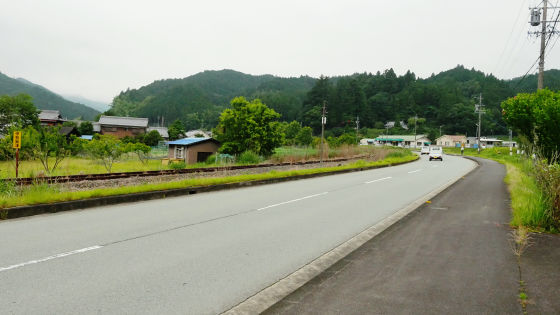
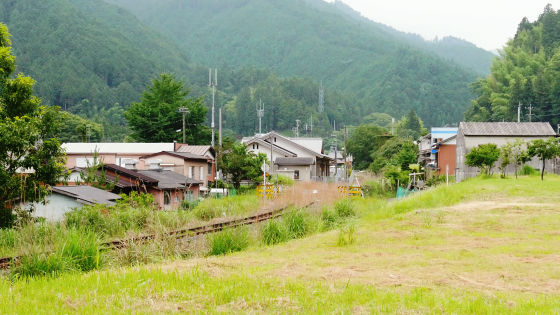
After going straight on the other side, make a big curve to the left and head toward the next Hitsu.
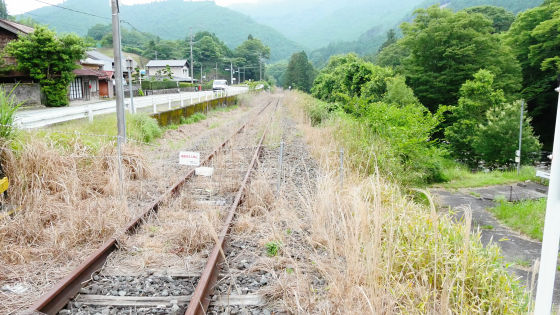
When I crossed the railroad crossing and walked from the national highway toward the station, I found a railroad crossing for pedestrians that I had not noticed earlier.
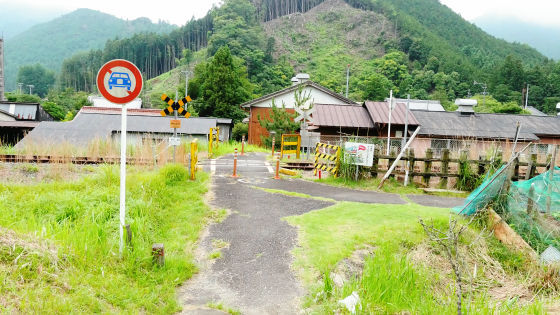
The cat was looking back at me.
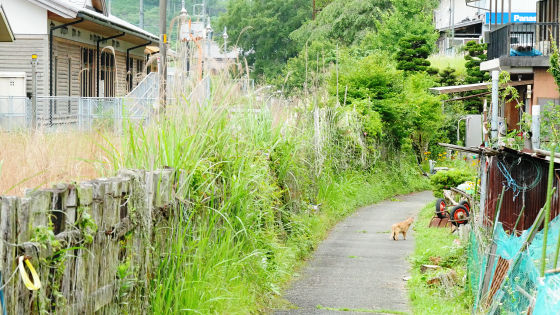
I can't enter the platform, so I found a station name from the national highway side. Although it is overgrown, the station itself has an atmosphere that seems to be able to resume operation at any time.

Then, take Prefectural Road 15 and head north along the Meisho Line. The Meisho Line and the prefectural road proceed almost in parallel, sometimes separating the river and sometimes crossing at railroad crossings and guards. This is where I looked back toward Ise-Okitsu on the way to Hitsu.
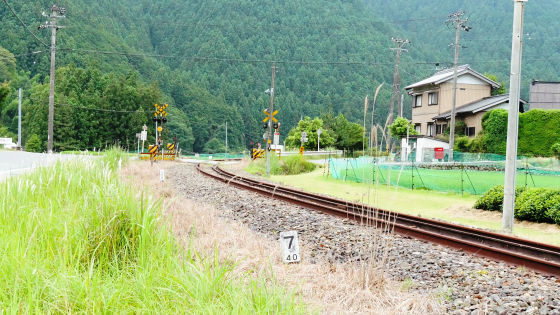
The Meisho Line goes a little higher than the road around here.
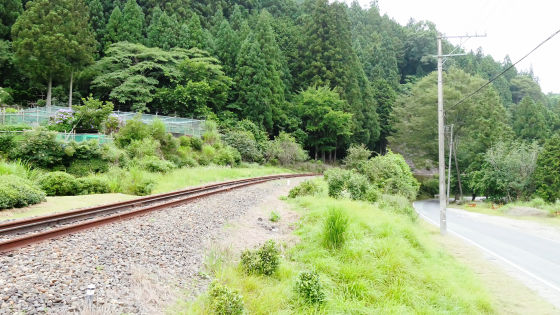
Hitsu station looking up from the prefectural road.
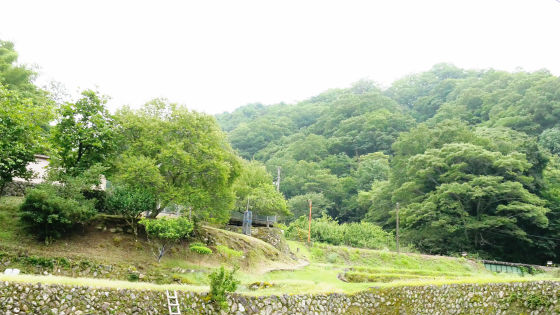
Going further, you can see the part that is a rock shed (covered road) where the Meisho Line runs on the other side of the river ...

Confirm that there is a part where a blue sheet etc. is placed in front of it. Apparently, it seems to be a place where restoration work is being carried out.
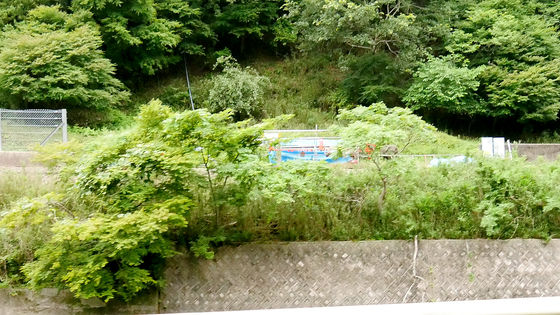
The rock shed itself doesn't seem to be collapsing.

I can only see this area from the opposite bank, but when I went further, I found a railroad crossing that crossed the Meisho Line, and a vehicle for construction was parked.
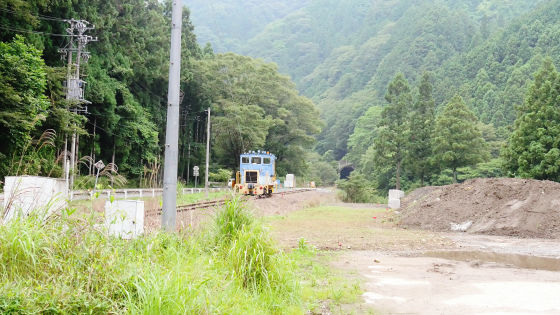
The track is off limits, but ...
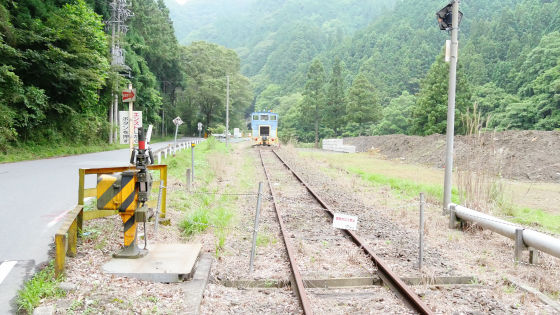
You can get closer along the road.
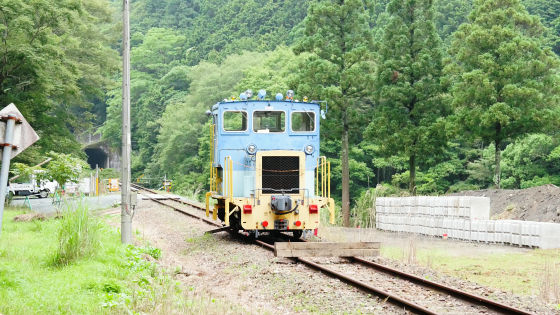
Diesel locomotive of unknown model number.
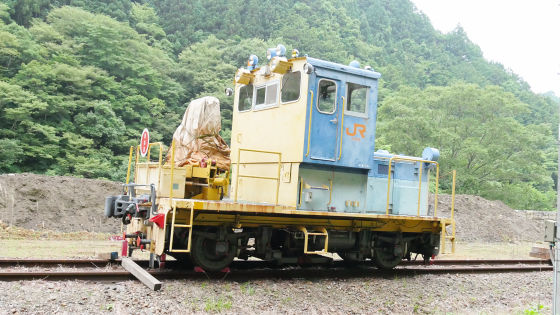
Concrete blocks are lined up ...

The railroad tracks in places other than railroad crossings were covered with wood, probably because of loading work on trucks.
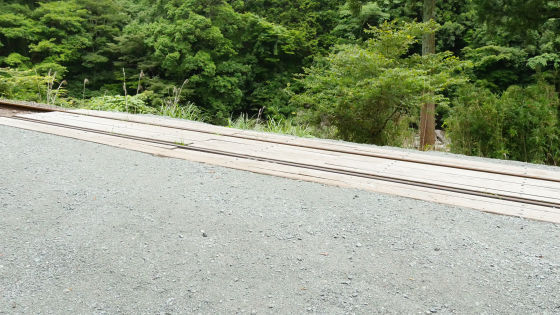
Since the destination is connected to the rock shed, it seems that this locomotive will carry materials and so on.
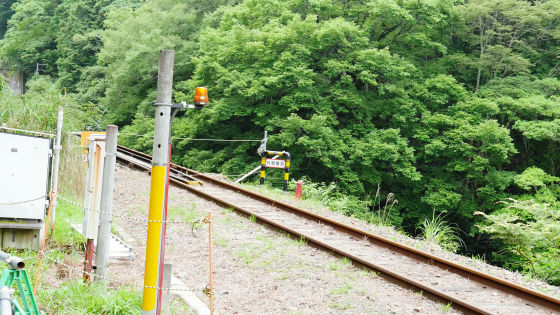
The place down from the railroad crossing is after a brand new construction.
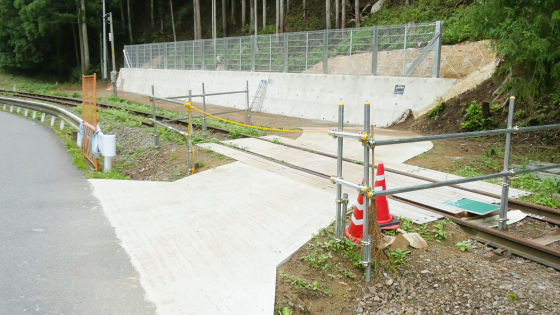
It was carried out for the restoration of the Meisho Line, as it was the '2013 JR Meisho Line-related emergency mountain restoration project'.

The degree of collapse that feels the need for restoration. After Typhoon No. 18, there were about 40 landslides and roadbed outflows between Ieki and Ise-Okitsu.
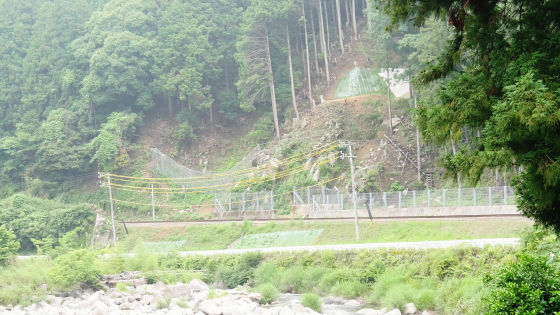
This railroad crossing hasn't been trained for years, so the grass was growing a lot.
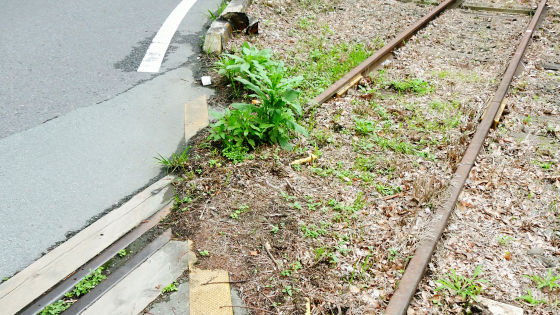
Further north, I found a huge pool with the words 'FIRE VALLEY Undeyukan'. This is the pool facility part
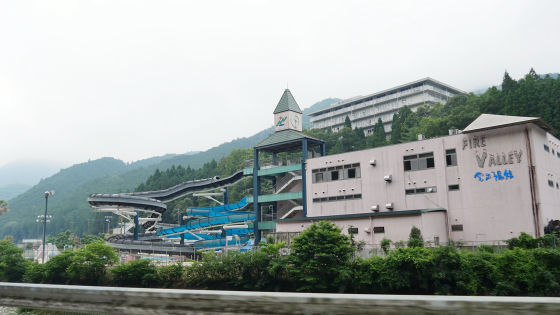
In front of Ise-Kamakura, the prefectural road will cut through the mountain with a new tunnel. The old prefectural road that runs parallel to the Meisho Line turns to the right, so when you enter there ...
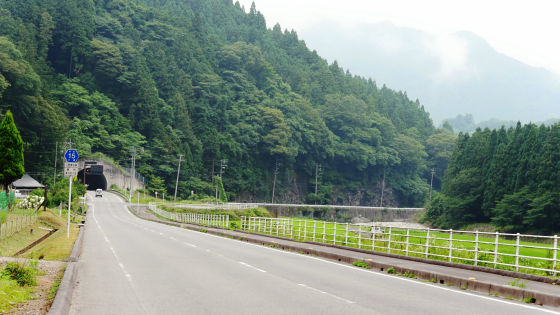
The Meisho Line appeared from the other side of the river.

This is Ise-Kamakura Station, and the one on the right is a simple toilet.
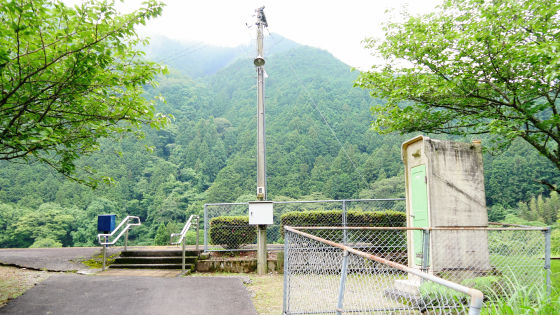
It is an unmanned station with a waiting room.

The location of the substitute bus stop is affixed to the waiting room, but it's tanned and I'm not sure.
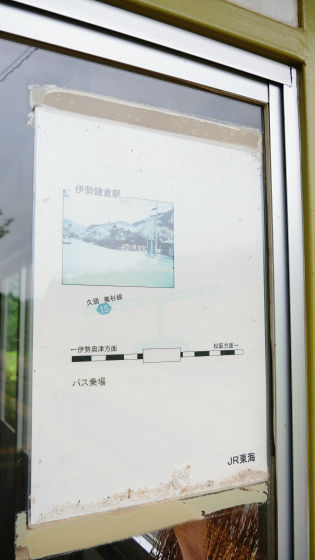
This is where I saw the direction of Ise-Yachi and Ise-Okitsu.

After this, the Meisho Line will head for Ise-Takehara.
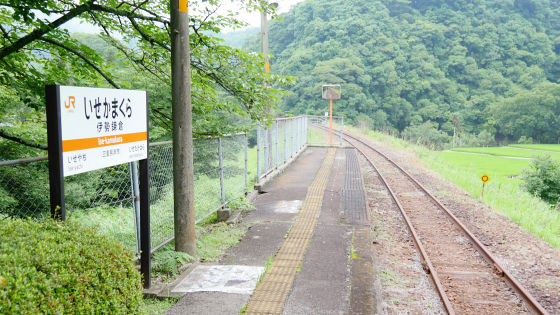
It was taken from the platform because it was dangerous to go down the railroad track, but probably because it was particularly dangerous on the bridge, a fence was attached to prevent entry and exit.

Looking at the direction of Ise-Yachi from the direction of Ise-Takehara at the end of the platform of Ise-Kamakura Station, it looks like this.
Ise-Kamakura has a station on the outskirts of the village, so even if you get out of the station, you just hit the road like this.
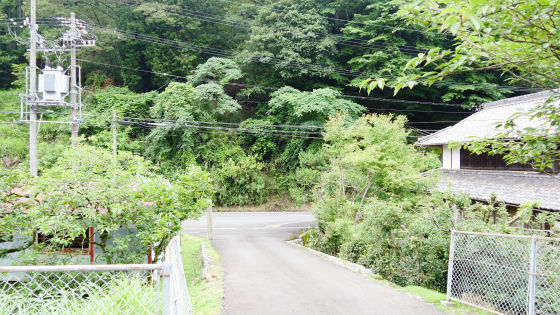
A community bus ran there.

After that, the Meisho Line often runs on the east side of the river, and the prefectural road often runs on the west side of the river.
There is a railroad crossing around Takehara after a long time ...
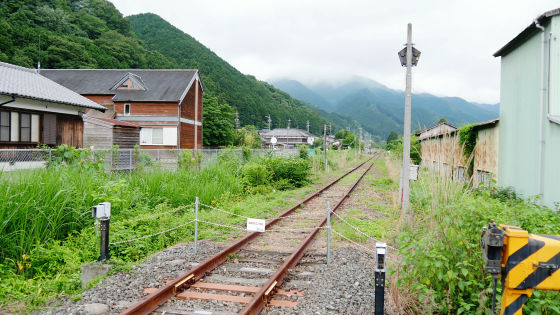
There was a nice building, so when I thought 'Is this Ise-Takehara station?', It seems that this was a district center.
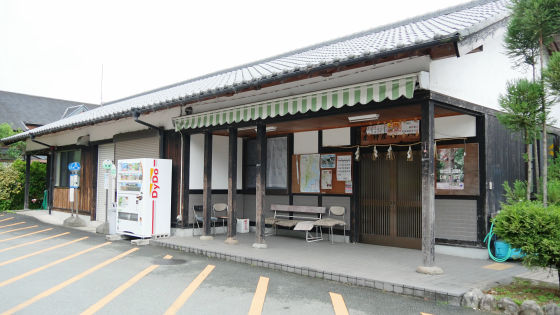
The station is a little further away, closer to the Ise-Okitsu side.
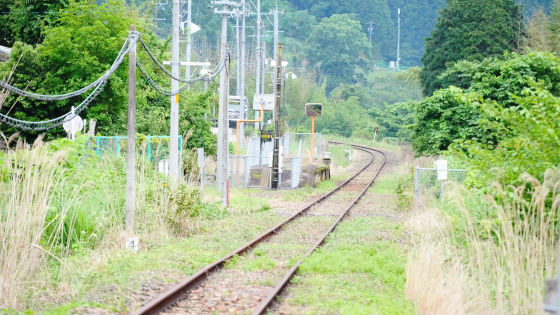
There are JR substitute bus, Mie Kotsu, and community bus stops at this location away from the station. The timetable of the substitute bus is as I saw before, but ...
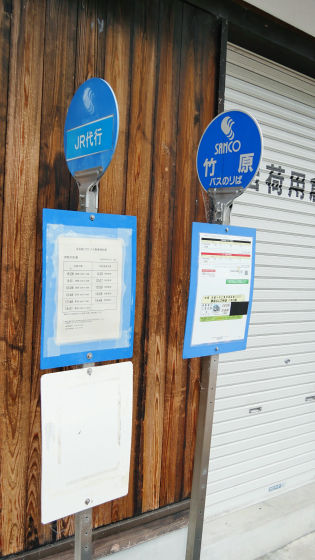
Mie Kotsu has a bus that is different from Ise-Okitsu, and you can get to

Next to Ise-Takehara is Ieki, and the current Meisho Line runs from Matsusaka to Ieki.
After Ise-Okitsu, there were relatively simple stations, but Ieki is a large station on the Meisho Line.

The Mie Kotsu bus is stopped, but this is a waiting JR substitute bus. After that, when the train arrives at Ieki Station, the customer will be taken over and headed for Ise-Okitsu.

The inside of the station building is not so large.
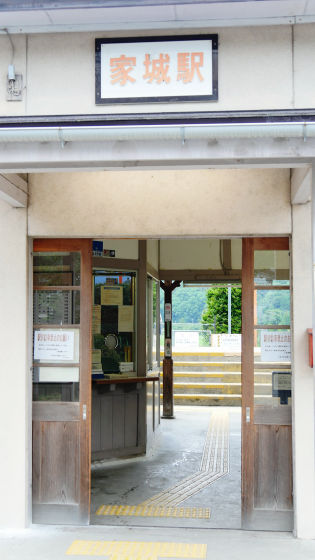
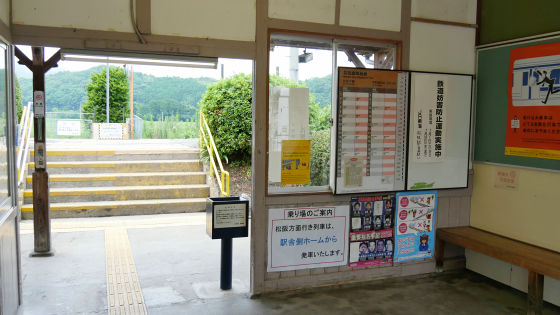
The castle had a two-sided, two-line structure where you could cross each other, but now that it is being turned around, only the platform on the right side, which is connected to the station building, is used.
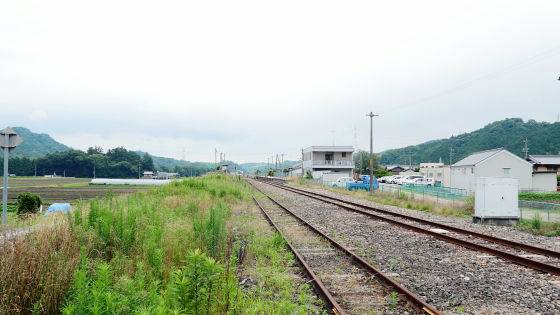
Originally, the platform where trains from Ise-Okitsu to Matsusaka arrive and depart was all-you-can-grow grass.
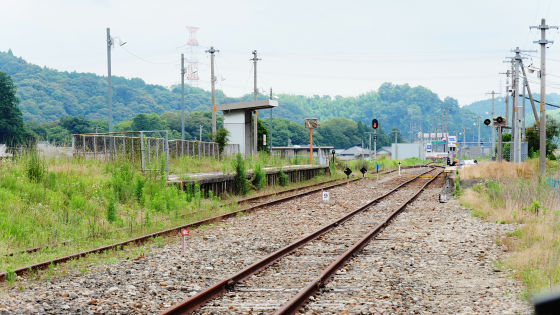
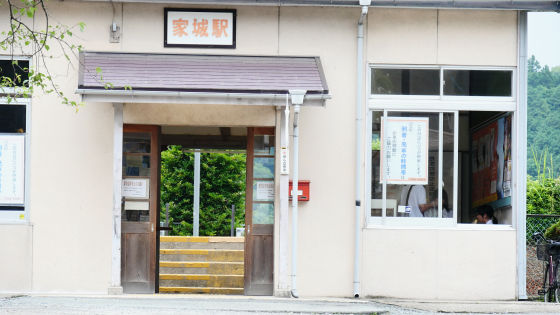
On the east side of the station, there was a signboard for the 'Ride and leave Meisho Line' facing the prefectural road.
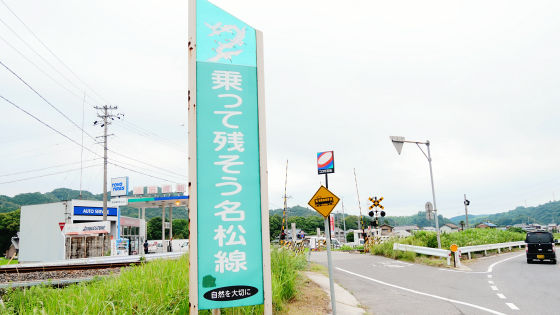
Then, a train from Matsusaka came.
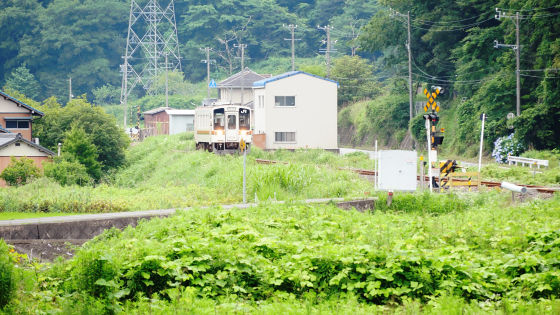
From the back side of the station building, I saw Kiha 11 while it was stopped. The number of high school students leaving school was quite large.
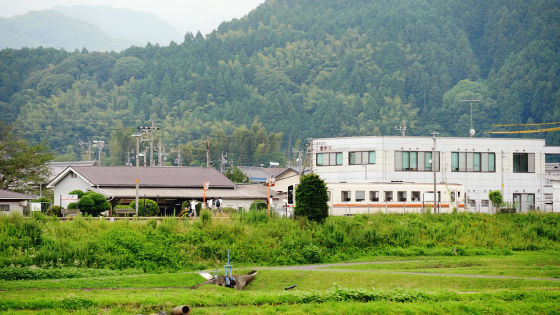
From Ieki to the front of Iseki, there are many parts where the prefectural road and the railroad track are parallel, so you can run while watching the Meisho Line.
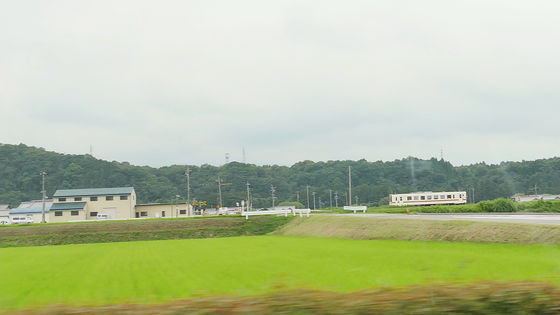
Kiha 11 type, which departed from Kaminosho, just before Matsusaka. I didn't speed up or slow down that much, but I was supposed to run about the same place while I was caught in the traffic lights.
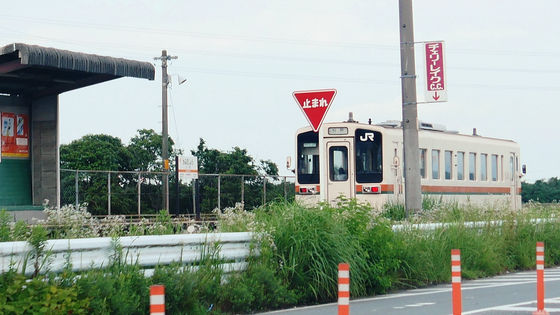
Since it doesn't run in parallel from here, it's ahead of Matsusaka station.
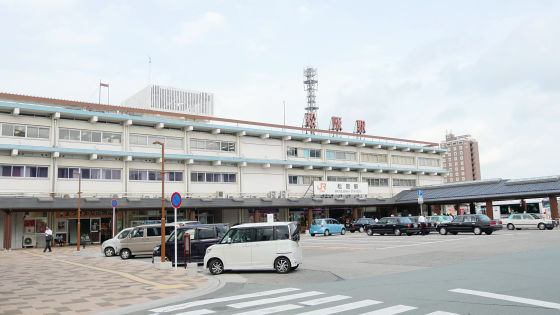
Kiha 11 that I ran earlier will turn back here and head for Ieki and connect to the bus.
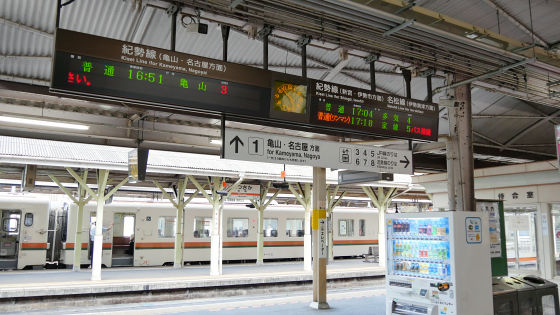
Haven't you come yet? When I look for ...
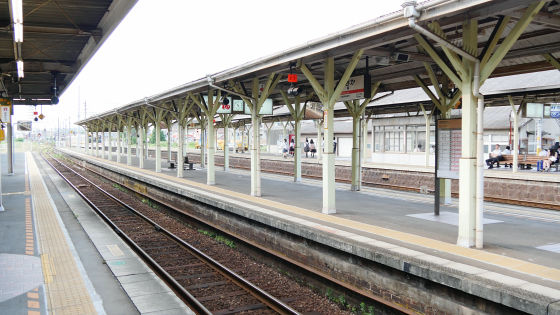
I had already arrived at line 5.

The cause of the defeat may be that the area around Matsusaka Station was a little congested.

Restoration and resumption of operation of all Meisho Lines is scheduled for the end of FY2015 (until March 2016).
As far as I can see, there are no parts such as 'the ground has collapsed and the track is floating in the air' or 'a megalith has fallen on the track', so it seems that it will be possible to restart without problems. On the other hand, although there is demand for commuting to school between Matsusaka and Iejo, which is in operation, there is not a large demand beyond Iejo, so JR Central initially considered abolishing it and switching to a bus. Is also convincing. Looking at the usage status, the number of passengers has been declining since fiscal 2009, when the bus was switched to a substitute bus, so is it possible to regain passengers after restoration and lead to further increases? The fact that the movie 'WOOD JOB!' Was out of service at the time of its release may not be a big deal, but it may have been a waste.
Related Posts:


